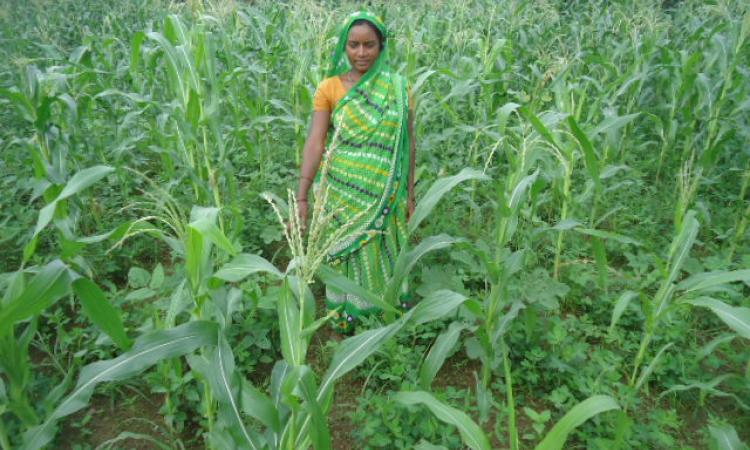
Should the next Union Budget go all-in on climate change? Should clean energy, state incentives, mitigation and adaptation all emerge as priorities? How will the administration deal with extreme weather events that become more common with climate change? Is it not fiscally wise to invest in climate solutions? While the budget will deal with multiple sectors, what should citizen's groups specifically ask from the Union Budget as regards climate adaptation?
A National Convention on Union Budget 2015-16 by the Centre for Budget and Governance Accountability, New Delhi held on 8th and 9th January 2015 brought together around 200 Civil Society Organisations from more than 20 States to discuss the policy asks related to climate change.
The recently released Intergovernmental Panel on Climate change (IPCC) synthesis report suggests the need to internalize climate considerations into development planning in developing countries. The effects of global warning on the Indian subcontinent vary from the submergence of low-lying islands and coastal lands to the melting of glaciers in the Indian Himalayas, threatening the volumetric flow rate of many of the most important rivers of India and South Asia. In India, such effects are projected to impact millions of lives.
Make climate change adaptation core to India’s financial planning for development
Subsequent to the release of the National Action Plan on Climate Change Adaptation (NAPCC), none of the adaptation-focused National Missions (pertaining to agriculture, water resources, forests and scientific knowledge), nor the State-level Action Plans on Climate Change (SAPCCs) that prioritize adaptation, have come up with clear budgets to support adaptation activities across sectors.
Nationally, Union Budget 2014-15 created the 100-crore National Adaptation Fund (NAF). Guidelines to operationalise this Fund are still awaited. Union Budget 2015-16 should, instead of funding stand-alone adaptation projects, increase the corpus and broaden the scope of the National Adaptation Fund. In a country where the economy is inextricably tied to climate-sensitive resources at several levels, Rs. 100 crore as a national adaptation budget is just notional.
This needs to be scaled up and rationalized with external funds for adaptation, provided under the United Nations Framework Convention on Climate Change and through bilateral and multilateral aid. The National Adaptation Fund must adopt a sector-based approach with basket funding from external budgets to improve adaptation and reduction of vulnerabilities. This will add value to ongoing development programmes. All climate-sensitive Ministries/ State departments should earmark a clear and measurable proportion of their spending towards building climate resilient components in their programmes.
Critical sectors crucial to adaptation interventions need adequate attention
The Union Budget 2015-16 must address capacity and skill building on better assessment of climate vulnerabilities and delivery of adaptation interventions at all levels and across all sectors – health, education, livelihoods and disaster mitigation and rehabilitation. This would include, for instance, skill in collection of climate data (including, for example, from panchayat and village level rain gauges), assessing risks and monitoring adaptation outputs and outcomes.
These critical sectors need to be integrated into the country’s adaptation policy network and the policies and budgets for adaptation need to be embedded as an intrinsic part of the policies and budgets for poverty reduction programs. The Union budget 2015-16 must provide incentives for the convergence of programmes and sectoral approaches to improve adaptation and reduce vulnerabilities.
For instance, the new Rs 2142 crore Neeranchal scheme announced under the Integrated Watershed Management Programme in Union budget 2014-15, should address the sustainability of watersheds, especially in the wake of water stress and climate change-induced decrease in quality of water.
Critical sector budgets need to be increased
The developmental budgets in agriculture, rural development and health saw marginal increases in Union Budget 2014-15 though these were not adjusted for inflation. These are the most vulnerable sectors to climate change and require robust developmental budgets with additional financing. With the creation of the National Adaptation Fund, it is time for Union Budget 2015-16 to introduce sectoral monitoring of financial outlays based on common databases and facilitated by GIS techniques.
It has not been possible to deconstruct these budgetary proportions to decipher what adaptation initiatives were funded or to what extent they reduced vulnerabilities to climate variability and built people’s resilience. These budgets were probably for business-as-usual activities under ongoing programmes that aim to safeguard a country that is anyway highly vulnerable to disasters and, as an agrarian society, is exceedingly dependent on temperature and rainfall patterns for survival.
Adaptation needs to have a bottoms-up approach
There is a need to build across the board capacities through programme and adaptation budgets for multi-stakeholder vulnerability assessment. Implementation of adaptation measures should be done through the three-tier federal framework because adaptation is local, and requires local knowledge, skills, resources, authority and decision-making. Also, it constitutionally falls within the jurisdiction of local panchayats and local municipalities within states.
Gender and equity considerations need to guide adaptation planning because climate change affects various sections of society differently. The poorest and the most marginalized sections of society often are the worst sufferers. They also have the least resources, knowledge, skills, authority and power to cope with, or adapt, to weather uncertainties.
/articles/climate-change-slow-it-down-or-deal-it